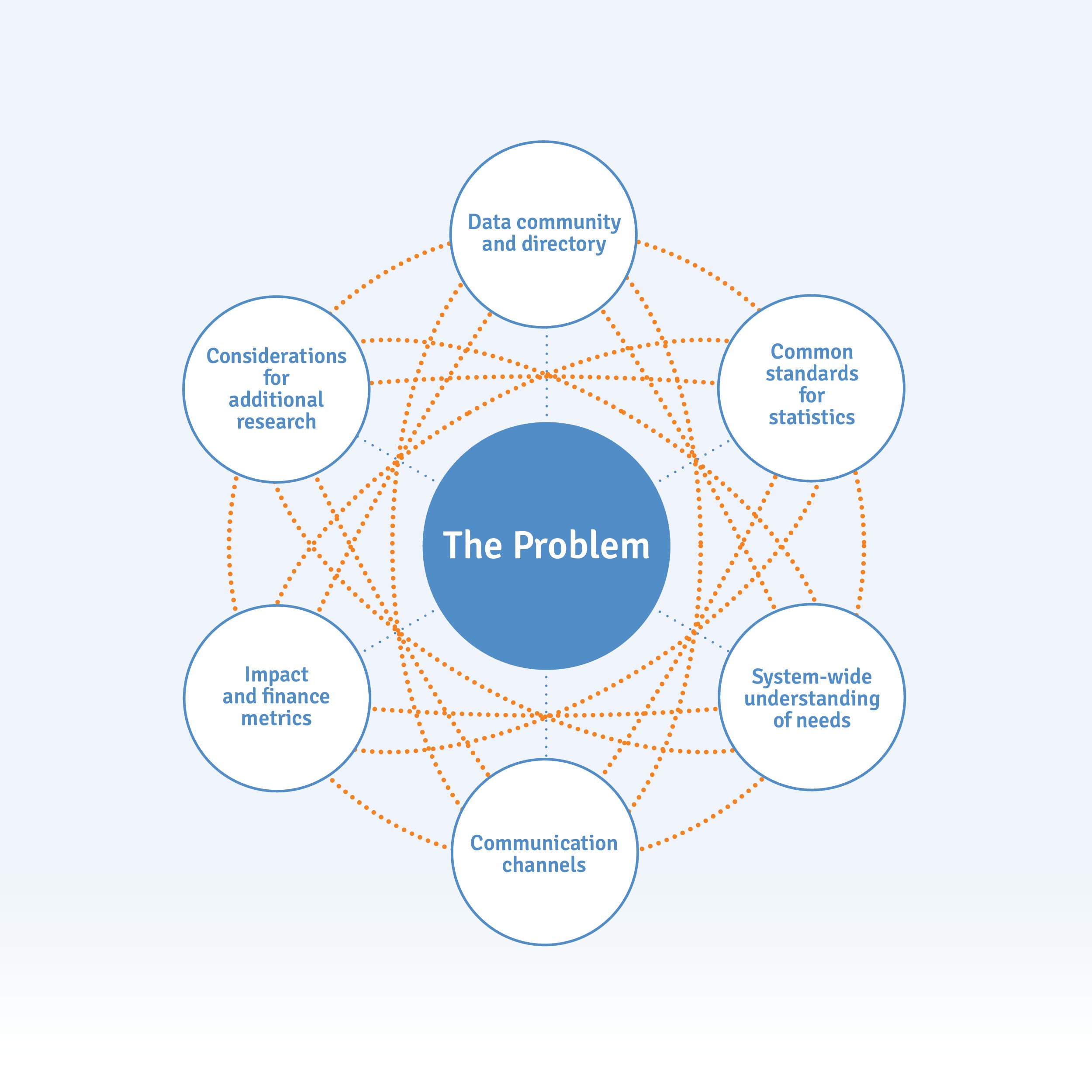1. Data community and directory
- Create a collaborative community of data aggregators to collect and share Orange County data between CBOs and government agencies such as: The American Community Survey (ACS); The County of Orange initiative Advance OC; Orange County Aging Services Collaborative (OCASC) Healthier Together; 2-1-1 OC; AARP’s Connect2Affect; the California Health and Human Services Open Data Portal - CHHS; and Ask CHIS using information from the California Health Interview Survey.
- Create a central directory of data repositories about the system of care in Orange County, categorized against issues being worked on, as an entry point for analysts. The County has indicated it is seeking to address restrictions on sharing data between their systems of care in order to provide more integrated case management support for individuals who access their services.
- Establish relationships with cities and other non-profits to systematically track programming and services such as the city support for technological access and increased social opportunities - especially those conducted through initiatives at senior and community centers.
- Expanding the database to include information from religious and smaller civic groups, and age restricted HOAs.
- Subsequent to starting this project, the Orange County Social Services Agency (OCSSA) issued a request for a proposal to conduct a countywide needs analysis on older adults and work with the County to develop a County Master Plan for Aging.
2. Common standards for statistics
- Create shared data standards that make it possible to correlate findings so that it is simple to perform statistical analysis across different data sets.
- Create a common standard to measure and monitor simple metrics of wellbeing.
3. Systemwide understanding of needs
Building on the efforts of the Orange County Strategic Plan for Aging (OCSPA), which largely has been self-funded, bring together organizations who work on similar themes of aging (e.g.: Food Insecurity, Housing, Transport, Disability, Technology, Caregiving, Isolation, Education, Work) with a view to identifying and prioritizing the real underlying needs within and between different sectors.
Create a systems thinking and mapping approach to the data collection, to understand the difference between what can be measured and the real underlying needs, behaviors, and dependencies on other things. Having a standard set of questions administered in the same way would allow for longitudinal assessment of problems facing older adults.
Coordinate or collaborate on an annual standardized multi-agency / organization sponsored county-wide survey with a large sample and robust methodology. This would allow various stakeholders to share common insights from the same dataset and leverage cost-efficiencies by scaling the sample size rather than duplicating efforts.
4. Communication channels
- Create networks of information, and share relevant data, between data-collecting organizations around common themes.
- Create an ongoing mechanism to measure and monitor simple, integrated metrics of wellbeing in Orange County.
- Improve strategies for the coordinated dissemination of regularly updated information to those in-need about solutions in their area.
5. Impact and finance metrics
- Derive a set of impact metrics for funding support, which measure hidden, adjacent and dependent costs, such as the consequential costs to healthcare of food insecurity and malnourishment; the impact of preventative measures on morbidity, longevity and healthcare costs; the wider economic costs of family caregiving; or the efficiency cost savings and satisfaction score of technology-enabled telehealth.
6. Considerations for additional research
- Services provided and clients helped at all of the age-restricted HOAs
- Quantifiable information about support for seniors provided by religious and CBOs
- Better information on community engagement and volunteering levels among older adults
Information about family composition and support for older adults:
- i. Do they have family in the area?
- ii. Do they receive routine visits or support from children or grandchildren?
- iii. What do multi-generational families look and feel like? (Who supports whom? Do the older adults support the kids and grandkids or is it the other way around?)
Better information about older adults who rent rooms from non-family members:
- i. What access do they have to a kitchen?
- ii. Do these homeowners participate in caregiving for the older adults?
Racial composition of Orange County by age, sex and location:
- i. Changing population ethnicity percentages of older adults over time
- ii. Ratio of sex by ethnicity as the population ages
- iii. Concentration of older adults within Orange County by ethnicity
- iv. Assessment of CBOs by ethnicity

